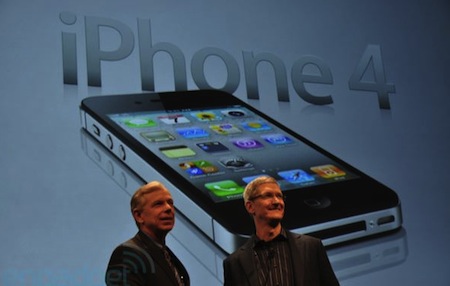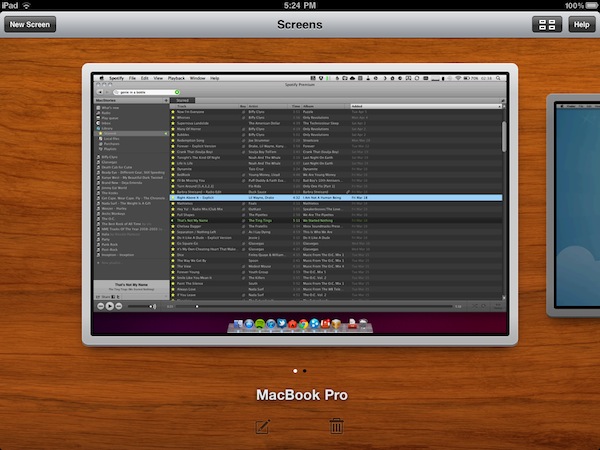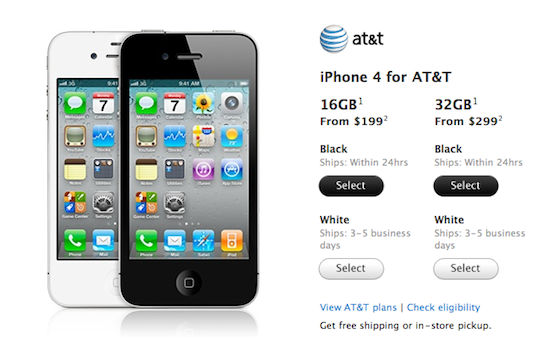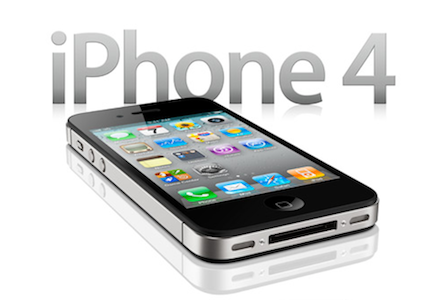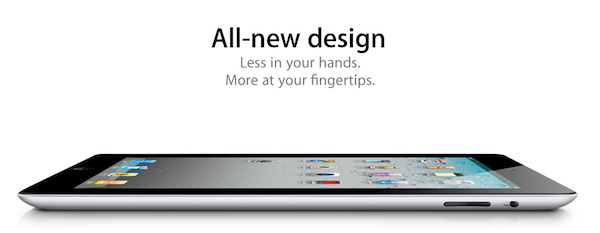When Co-Founders Mike Matas and Kimon Tsinteris set out to change the world of digital publishing, not many would have guessed that Al Gore would be at the forefront of their first title until Our Choice was demoed as a TED Talk, where the workings and interactions of the first title built using the new platform were revealed. Today, Our Choice is available at an introductory $4.99 on the App Store for the iPhone and the iPad, delivering rich interactive content via a completely custom app built on a native backbone. The Push Pop Press platform is seeking to revolutionize how content is published and made interactive, and my initial impressions with Our Choice can validate that cause. What’s at stake isn’t just the future of the new digital platform, but a complete rethinking of the traditional digital magazine or newspaper. The App Store is flooded with projects traditionally based on Adobe technologies, and while it was a good first attempt, the content we view needs to be intuitive, interactive, but most importantly fluid and un-static. Push Pop Press is the ideal platform to revolutionize how we think of traditional media, and Our Choice is the launch title proving that this new vision for content is a clear winner.
Our Choice, Proving Push Pop Press Will Revolutionize Digital Publishing
#MacStoriesDeals - Thursday
Here are today’s @MacStoriesDeals on iOS, Mac, and Mac App Store apps that are on sale for a limited time, so get them before they end!
Instapaper Developer Explains Why Free Version Is “Taking A Vacation”→
Instapaper Developer Explains Why Free Version Is “Taking A Vacation”
In an Apple store, it’s nearly impossible to spend less than $30 on anything. Apple’s stance is clear: “This is how much our stuff costs. If you don’t like our prices, that’s fine. We don’t need everyone to buy our stuff.”
That’s roughly the stance I’ve chosen to take. My app costs $5. I understand that not everyone will like my price, and that’s fine. I don’t need every iOS-device owner to buy my app — I’d do quite well even if only 1% of them did.
Instapaper developer Marco Arment has published an interesting article explaining why he removed the free version of Instapaper for iPhone from the App Store, and he’s not planning on making it available again anytime soon. There are thousands of free applications in the App Store: most of them are games from huge companies backed by multi-million investments and funding rounds, some of them are “lite” versions of less popular apps with limited functionalities. For an indie developer like Marco – remember, he left his position at Tumblr to focus on Instapaper – choosing to offer different versions of the same app is a difficult decision: what are the features that need to be exclusive to the paid app? And what’s a customer supposed to think when he only sees the limited feature set of the lite / free version? More importantly, how many App Store users are going to choose the paid app as the first option when a free counterpart is available?
These are risks only developers who truly believe in their work are willing to take. Marco does, and he’s decided to bet on his $5 piece of software because he knows it’s a great product that doesn’t deserve to be crippled by a free version with less features and ads. Go read the full article here.
NPD: Verizon iPhone Helping Apple In The March Against Android
Research group NPD released its Mobile Phone Track consumer tracking service for the first quarter of 2011 today, and according to the data gathered by the company the release of the Verizon iPhone helped Apple gaining market share in the U.S. smartphone market at the expense of Google’s Android operating system which, however, in spite of Apple’s growth is still accounting for 50% of smartphone sales in the United States in the quarter. Apple’s mobile phone sales have reached 14% in Q1 outranking RIM, Motorola and HTC, placing the company in the third spot of smartphone sales behind Samsung and LG. NPD claims the Verizon iPhone “solidified” Apple’s position with the top-selling phone in the US – something that doesn’t come as a total surprise considering Verizon Wireless already announced the CDMA iPhone 4 launch was the most successful ever for the company, with 2.2 million activations in 2 months for the “most acquired” smartphone in February.
Apple and Verizon had a very successful launch of the iPhone 4, which allowed the iPhone to expand its market share that was previously held back by its prolonged carrier exclusivity with AT&T,” said Ross Rubin, executive director of industry analysis at NPD. “While some of that growth came at the expense of Android operating system (OS), Android models still accounted for half of all smartphones sold in the quarter.”
According to NPD’s “Mobile Phone Track” consumer tracking service, for the first time a majority (54 percent) of all new mobile-phone handsets purchased by U.S. consumers were smartphones. Driven by increases in smartphone sales in Q1 2011, average selling prices for all mobile phones rose 2 percent over the previous quarter to reach $102; however, average prices for smartphones actually declined by 3 percent (falling to $145).
While Android lost ground for the first time since Q2 2009, a report by Digitimes earlier today about Pegatron’s Q1 results suggested Apple was lowering orders for CDMA iPhone following low sales under expectations. Verizon Wireless announced 2.2M activations, but Apple didn’t disclose numbers behind AT&T and Verizon iPhone sales at the Q2 2011 earnings call.
Screens 1.5 Now Available: Still The Best VNC Client for iOS
When I first reviewed Screens, a universal VNC client for iOS by Edovia, I was impressed by the speed and elegance of the app, which made it super-simple to connect to Windows PCs or Macs on a local network, as well as remote computers powered by a global dynamic hostname. Together with that, Edovia’s Screens proved that a VNC client for iPhone or iPad didn’t need to completely mimic the functionality of a desktop computer: rather than putting a mouse cursor on screen, the app allowed you to turn a computer’s screen into a multi-touch based experience as if it was built for iOS in the first place. With Screens, you don’t move a cursor like in most VNC clients: you touch the computer’s windows and apps. With gorgeous animations, responsive loading times and a free service called Screens Connect to automatically and easily log into a remote machine without having to fiddle with IP addresses and router ports, Screens managed to become the most popular VNC app for iOS, and one of my favorites overall.
Months after the original release, Screens receives today a major update to version 1.5, which I had the pleasure to beta test and play with for the last couple of weeks. Screens 1.5 introduces a lot of optimizations to the underlying VNC engine to make connections faster, more stable and, based on my tests, more responsive with both PCs and Macs. Minor bug fixes and improvements aside, Screens 1.5 fixes an issue that caused a crash when disconnecting from a computer, and enhances responsiveness with several Windows VNC servers. As far as connecting to a remote computer goes, Screens now displays the Screens Connect status in the Settings, so you can instantly know whether your computer is remotely accessible or not. However, connecting to a machine on your local network is as easy as before – Screens automatically recognizes computers with screen sharing enabled, and all you’ll have to do is enter a password and choose a nickname.
Screens 1.5 also brings a new icon, a revamped UI and a new Grid View on the iPad that will come in handy for those who manage a lot of different computers; if you’re concerned about privacy, Screens now enables you to choose whether or not you want the app to grab a screenshot of your desktop upon disconnecting. If you don’t want to have “real” previews in Screens’ dashboard, a default image will be used. In the Settings, you can also set a computer to open in fullscreen mode, and you can toggle modes (full, partial, off) with a three-finger tap. It works really well.
Screens 1.5 is an important update to a great VNC client for iOS that keeps getting better with lots of options, and a fast engine. The developers didn’t sacrifice usability for options, though, as the app is still very easy to use and provides a simple way to add, modify and delete computers. The update is propagating now in iTunes, and you get the app here at $19.99. Highly recommended. Read more
White iPhone 4 Available Online, Ships In 3-5 Business Days
As announced yesterday, the white iPhone 4 went on sale in international Apple retail stores last night in Eastern Hemisphere countries, and it’s now available for purchase in the Apple online store as well. The white iPhone 4 came out after a 10-month delay explained by Apple’s Phil Schiller in an interview to Mobilized yesterday, and it’s available on both Verizon and AT&T in the United States. The device has the same price point of the black iPhone 4, although it features a different proximity sensor due to the use of white paint on the front panel (one of the reasons that caused the delay in the design and manufacturing process).
The Apple online store went down for a couple of hours last night, and it came back updated with the white iPhone available alongside the black model. The device is shipping in 3-5 business days in all international Apple online stores, so if you really want one now, perhaps you’d like to consider driving to the nearest Apple Store to get it.
As Apple writes on its homepage, the white iPhone 4 is finally available.
Apple Reducing CDMA iPhone Orders Following Low Sales?
In an article focused on Pegatron’s first quarter financial results for 2011 (in which the company posted net losses of $19.38 million), Digitimes reports an interesting tidbit about CDMA iPhone orders and the fact that, perhaps following sales under expectations, Apple lowered the estimated shipments for 2011 from 10 million to 5 million units.
Market watchers were originally optimistic about Pegatron’s performance in 2011 as the company landed orders for CDMA iPhone 4 from Apple, but as the company reported losses for the first quarter of 2011, the market watchers are turning conservative about CDMA iPhone 4 shipments in the future as volumes may not be as strong as expected.
Meanwhile, Pegatron originally expected to ship 10 million CDMA iPhone 4s in 2011, but sources from upstream component makers pointed out that Apple’s orders already saw a significant reduction and the volume is estimated to drop to only five million units.
There might be a few reasons behind slow CDMA iPhone sales: first off, the device was introduced on Verizon (a CDMA network in the United States) in February, by the end of the iPhone 4 lifecycle, and was never released on other CDMA networks worldwide, although Apple repeatedly confirmed its interest to expand the iPhone’s brand to other international markets. More importantly, slow Verizon iPhone sales had already been reported a few days after launch, although the company later announced 2.2 million activations in 2 months, and a report claimed the Verizon iPhone was the most acquired smartphone in the United States in February. Then why lowering orders from 10 million to 5 million? It is possible Digitimes’ report is incorrect, and the CDMA shipments mentioned in the article referred to CDMA iPhones on other carriers, which might have been delayed to late 2011 – when the iPhone 5, supposedly a universal GSM-CDMA handset, is set to come out. Digitimes’ article doesn’t mention Verizon Wireless, so there’s the possibility Pegatron was asked to lower shipments for iPhone 4s destined to international carriers. You can read the full report on Pegatron’s first quarter here.
Three Foxconn Employees Arrested for Leaking iPad 2 Design
In the months leading to the iPad 2 announcement, several “leaked” case designs coming from China and Taiwan seemed to provide good indication of what the device would look like. These cases were all based on the same design principles such as tapered edges, thinner body and flat back, clearly suggesting manufacturers had access to the same design documents that were quickly spreading across the tech industry. Digitimes reports today Chinese-language publication sznews.com claims three Foxconn employees were arrested and charged for violating Foxconn’s trade secrets and leaking the iPad 2 design weeks before Apple’s announcement.
Several online shopping retailers in China were able to sell iPad 2’s protective case products before the iPad 2 was even launched, leading Foxconn to suspect that there might have been some employees leaking the design of iPad 2 which it reported to the local police.
The local police on December 26, 2010, arrested three employees that were suspected of leaking the design, and officially charged the three employees for violating the company’s trade secrets on March 23, 2011, the reported added.
Foxconn assembles several Apple products such as iPhones, iPod touches and iPads. It’s not the first time products leaks from China have offered a glimpse of future Apple devices months ahead of the official launch, but you might remember the situation last year with case designs for the iPad 2 coming out every few days was pretty bad for Apple. Foxconn also announced its plans to invest in a $12 billion facility in Brazil, and start iPad production there in November.
Apple May Have Snagged iCloud For a Cool $4.5 Million
If you ever thought Apple might rebrand MobileMe to something more Apple-esque, the purchase of iCloud.com for $4.5 million could be a sign of things to come. While not confirmed, GigaOM reports that Xcerion (having recently rebranded iCloud to CloudMe) may have sold the iCloud.com domain. As of one o’clock tonight, Xcerion still shows up as the domain’s owner, though this could change in the coming hours. MacRumors reports that the domain will likely come under the control of MarkMonitor, a brand management firm that handles high-profile domain name registrations.
With Apple’s new cloud services preparing for launch, the purchase of iCloud.com could indicate that new services from Apple may be arriving sooner than later, as Apple is talks with record labels and have recently gotten Warner Music Group on board. A music subscription or storage service from Apple could cost $20 a year, and the iCloud also play a big role in a traffic and navigation app. Could MobileMe remain and entail its current email and contact sharing prowess, or would iCloud encompass the original service and expand to include new offerings? Don’t forget: Apple has recently stopped selling MobileMe on retail shelves, and have even turned down customers to opt for the free trial.





